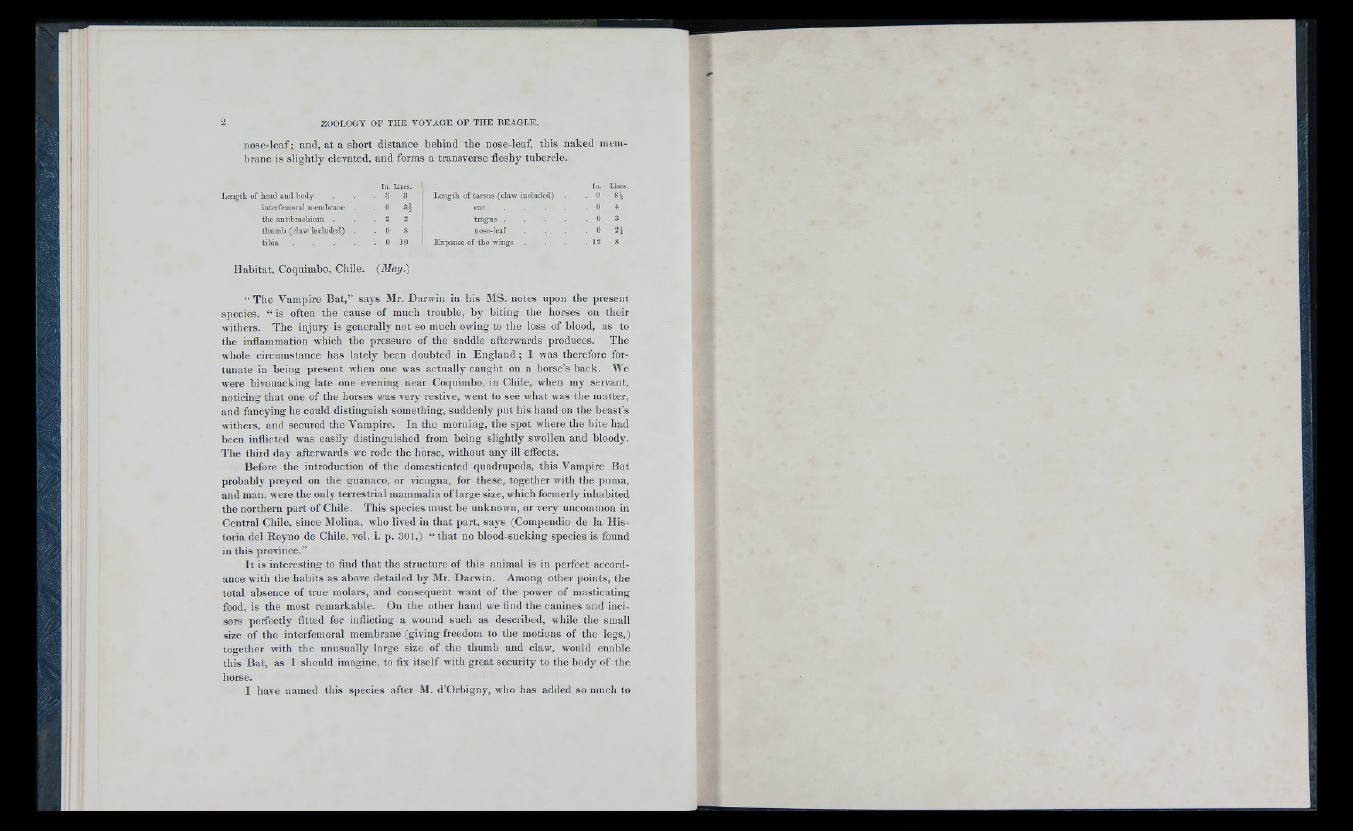
ZO O LO G Y O F T H E V O Y A G E O F T H E B EA G L E .
nose-leaf; and, at a short distance behind the nose-leaf, this naked membrane
is slightly elevated, and forms a transverse fleshy tubercle.
Length of bead .and body
intcrfcmoral membrane
the antibrachinm .
thnmb (claw included)
tibia .
In. Lines.
3 3 0 3^ Length of tarsus (claw included)
tragus .
nose-leaf
Expanse of the wings
In. Lines
, 0 Sè
0 43
. 0 H
. 12 8
Habitat, Coquimbo, Chile. {May.)
“ The Vampire Bat,” says Mr. Darwin in his MS. notes upon the present
species, “ is often the cause of much trouble, by biting the horses on their
withers. The injury is generally not so much owing to the loss of blood, as to
the inflammation which the pressure of the saddle afterwards produces. The
whole circumstance has lately been doubted in England ; I was therefore fortunate
in being present when one was actually caught on a horse’s back. We
were bivouacking late one evening near Coquimbo, in Chile, when my servant,
noticing that one of the horses w'as very restive, went to see what was the matter,
and fancying he could distinguish something, suddenly put his hand on the beast’s
withers, and secured the Vampire. In the morning, the spot where the bite had
been inflicted was easily distinguished from being slightly swollen and bloody.
The third day afterwards we rode the horse, without any ill effects.
Before the introduction of the domesticated quadrupeds, this Vampire Bat
probably preyed on the guanaco, or vicugna, for these, together with the puma,
and man, were the only terrestrial mammalia of large size, which formerly inhabited
the northern part of Chile. This species must be unknown, or very uncommon in
Central Chile, since Molina, who lived in that part, says (Compendio de la H istoria
del Reyno de Chile, vol. i. p. 301,) “ that no blood-sucking species is found
in this province.”
It is interesting to find that the structure of this animal is in perfect accordance
with the habits as above detailed by Mr. Darwin. Among other points, the
total absence of true molars, and consequent want of the power of masticating
food, is the most remarkable. On the other hand we find the canines and incisors
perfectly fitted for inflicting a wound such as described, wliile the small
size of the interfemoral membrane (giving freedom to the motions of the legs,)
together with the unusually large size of the thumb and claw, would enable
this Bat, as I should imagine, to fix itself with great security to the body of the
horse.
I have named this species after M. d’Orbigny, who has added so much to